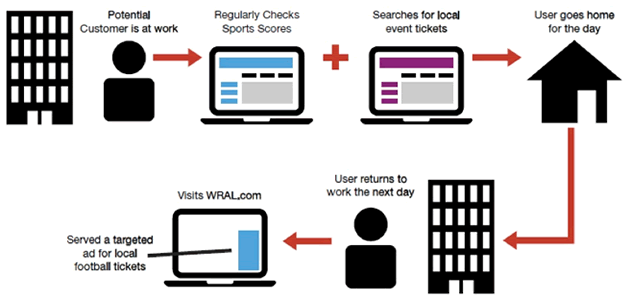Those times in which marketers were sending the same messages to everybody seem to be history – at least this is what we like to believe – more and more of them being interested in behavioral marketing. The latter is a technique used by publishers and advertisers to increase the effectiveness of their campaigns, using the information collected on users’ individual browsing behavior. Or you can simply call it segmentation based on customer behaviors.
Since it’s being used alongside other forms of targeting based on factors like demographics, geography and contextual web page content, a lot of marketers refer to this process as “audience targeting”, but we’ll stick to behavioral targeting for the moment.
Ok, but the big question is…how does this thing work? How can behavioral targeting help a site? Well, it’s pretty simple, actually. When somebody visits your website, a cookie is placed into his or her computer. And this little cookie gathers information about the visit, helping the website owner to put the visitor into a specific group or create a profile that links to the visitor’s web browser. From that point, your website will show that users only relevant information.
We know, it sounds a bit creepy to hear that somebody, in some way or another, is collecting information about what you’re doing on the Internet, but there’s no need to worry. Here are the main types of behaviors marketers are interested in…
- IP Address & Geolocation – This is one of the most basic types of segmentations. It’s essential for targeting audience by where they live, in order to show discounts or offers targeted to a specific region.
- Recency of visits/repeat visitor or new visitor – You have noticed that after checking some products on a site, you later see ads of those sites everywhere, right? Well, it’s because of this type of behavioral targeting. Also a repeat visitor will see content based on previous searches.
Besides these two, other variables, like referring URL, campaign, device used for browsing and search keywords can also be used for targeting. Keeping it short, you will be able to know when somebody has visited your website, how many times and learn about the paths they’ve taken.
We know what you’re thinking…implementing a technology like behavioral targeting looks pretty tough and you need a lot of technical knowledge in order to do it, not to mention the research that this implies. We agree, it can sound intimidating, but you know what’s the best part? You don’t need to be an ecommerce giant like Amazon or eBay in order to use it, as there are others willing to do it for you! And by others we mean Retargeting.Biz.
Our platform can deliver specific insights, based on behavioral targeting, which won’t only bring back users to your site, but also increase the conversion rate.
So, what do you say? A higher conversion rate sounds good, right? Tell us what are your thoughts on behavioral targeting and its benefits, using the comments section below!

